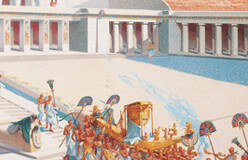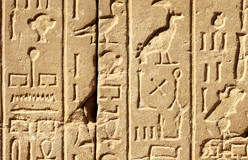During the Old and Middle Kingdoms, pyramids were built to house the pharaohs’ bodies after death.
Some were 40 stories high, constructed of stone blocks that each weighed three tons or more. The Egyptians’ only tools were ropes, levers, wedges, and a few stone and copper hand tools. They lacked the wheel or any hoisting equipment to move the stone. How did they do it? They did it the hard way, with muscle power. For three or four months each year, while the Nile flooded, the pharaohs put farmers and laborers to work on building projects. The largest of these projects was the pyramids.







